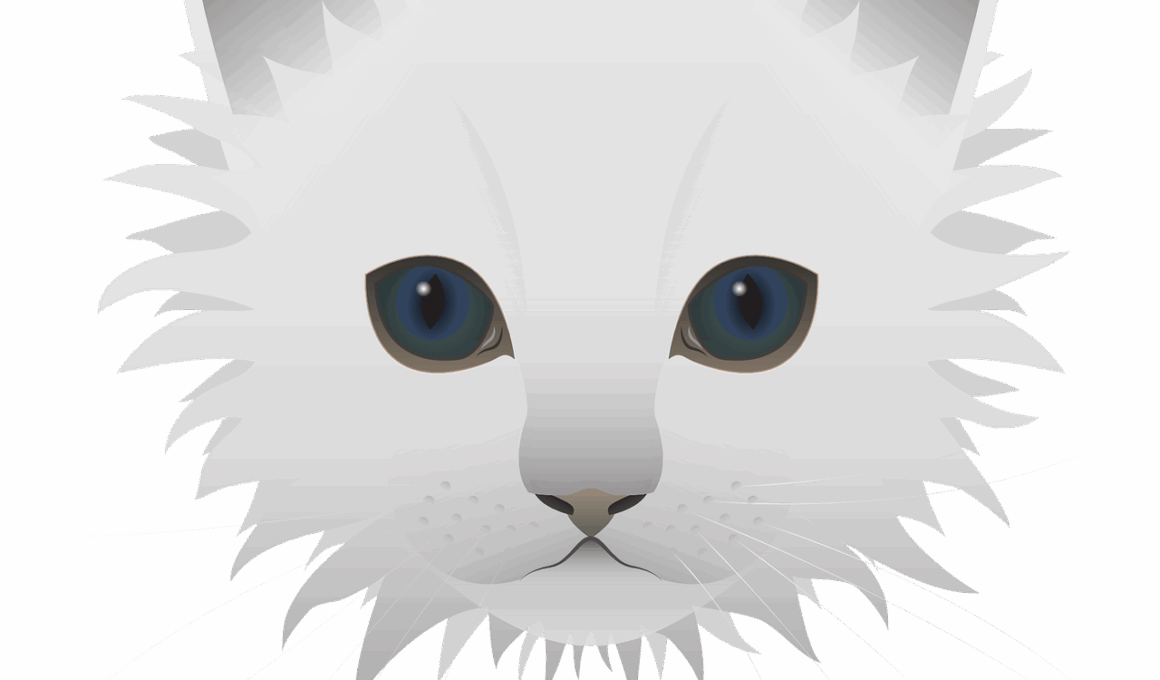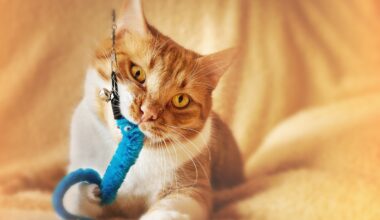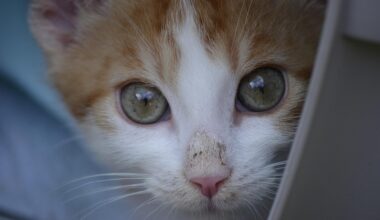Understanding Different Types of Cat Meows and Their Meanings
Cats communicate using various meows, making their vocalizations an essential part of their behavior. Recognizing the specific context of each sound a cat makes can help owners understand their feline companions better. Frequent meowing may indicate a range of emotions or needs, from hunger to loneliness or even health concerns. Each cat has a unique voice, and the pitch, volume, and frequency of their meows can convey different meanings. By learning to decipher these sounds, you can respond to your feline friend more appropriately. For instance, if your cat’s meow is high-pitched and persistent, it often signifies a desire for attention or playtime. On the contrary, low and slow meows can suggest discomfort or aggression. These distinctions play a critical role in cat training, especially in addressing excessive meowing. Consistency in responding to specific meows can reinforce positive behavior while reducing unwanted vocalizations. Therefore, understanding the various types of cat meows equips you with the tools to effectively train your cat, positively enriching both your lives.
Another reason for excessive meowing could be related to age or health issues. Senior cats tend to vocalize more due to disorientation or comfort-seeking behavior. Recognizing this necessity is crucial for maintaining a healthy bond between you and your cat. If your cat suddenly starts meowing excessively, it’s essential to consider their health status. Regular check-ups with a veterinarian can help address any potential medical conditions affecting their vocal behavior. Sometimes, cats meow excessively as a response to boredom. Providing them with stimulating toys, enriching environments, and interactive playtime can significantly reduce this vocalization. Implementing a routine will ensure your cat knows when to expect play and feeding times. Another aspect of training is the significance of positive reinforcement. Rewarding your cat when they are quiet can build habits that discourage excessive meowing over time. Training should be patient and consistent, incorporating affection and treats as rewards. Notably, understanding your unique cat’s personality is vital for determining the right balance in addressing their needs while training them effectively. Ultimately, communication is central to a healthy relationship with your cat.
Identifying Cat Meowing Behaviors
Understanding different meows and their meanings starts with attentive observation. Take note of your cat’s lifestyle and typical vocalization patterns. For instance, if they predominantly meow only at specific times of the day, such as around meal times, it may indicate hunger or a desire for routine. Listen closely to the pitch changes in their sounds; higher pitches can relate to excitement or anxiety, while lower pitches might signal anger or dissatisfaction. It’s essential to differentiate between meows that seek attention versus those that express concern or discomfort. Besides vocalizations, observe accompanying body language, as this can often clarify what your cat is trying to convey. If your cat approaches you with their tail up while meowing softly, they may seek affection or playtime. However, if they’re hissing or growling, it denotes stress or irritation. Therefore, creating a connection between vocalization and body language allows you to adapt responses accordingly. Over time, you’ll develop a stronger bond with your feline friend through effective communication. This connection reduces excessive meowing, promoting a more harmonious environment for both you and your cat.
It’s also helpful to explore the context in which the meowing occurs. Is your cat meowing during times of isolation? This may suggest loneliness, which can be alleviated by spending quality time together. Interactive play and engaging activities keep your cat mentally stimulated and emotionally satisfied. Alternatively, incessant meowing can indicate a need for attention simply because they feel ignored. Ensure they receive consistent interaction to prevent feelings of neglect. Practicing patience during training sessions is essential. Reprimanding your cat for excessive meowing can lead to confusion and increase anxiety. Instead, redirect their focus using toys or activities to shift their attention elsewhere. Gradual training approaches help instill quieter behaviors naturally. Another technique to reduce excessive meowing is implementing a schedule that includes routine feeding times. If your cat associates times with mealtime, their vocalizations may diminish outside those periods. Establishing a daily routine creates structure and predictability, crucial for a cat’s sense of security. Understanding the context behind each meow is instrumental in your journey toward effective training.
The Role of Environment in Cat Behavior
The environment significantly impacts a cat’s vocalization. Cats are naturally curious and may meow more if their surroundings provoke anxiety or fear. High-traffic areas can become stressful, leading to excessive meowing. Providing cozy, quiet spaces can help mitigate anxiety, contributing to a more serene atmosphere conducive to relaxation. Additionally, enriching your cat’s environment with climbing structures, scratching posts, and toys can encourage self-play without vocalizations for attention. Fulfilling their need for stimulation can create a more engaging atmosphere that discourages excessive meowing. Engaging with your cat through sailing balls or interactive toys provides outlets for their energy. Furthermore, consider the effects of other pets in your home. If multiple animals are present, your cat may feel the need to assert themselves vocally to command attention or establish territory. In understanding these environmental factors, you can tailor your approach to reduce vocalization without resorting to negative reinforcements. Your cat’s comfort and well-being are paramount, and acknowledging how surroundings contribute to their behavior paves the way for effective training.
Furthermore, addressing any stressful environmental triggers is vital, as they are often significant contributors to excessive meowing. If your cat seems particularly anxious, consider any recent changes that could affect their environment. A new pet, moving to a different home, or even significant changes in your daily routine can cause distress. Understanding these triggers can help you create a more supportive and stable home for your feline companion. Implementing calming products such as feline pheromones or music designed for cats can also soothe an anxious pet. Behavior modification techniques can significantly improve your cat’s overall demeanor and, subsequently, their vocal habits. Simple actions such as playing soothing music or providing a warm, cozy spot can provide emotional security for your cat. This can reduce the overall need for excessive vocalizations. Also, consistency in your response to meowing reinforces their understanding of acceptable behavior. By pairing loved behaviors with positive reinforcement, such as treats or affection, your cat can learn when to communicate versus when to be quiet. This encourages a calmer environment while minimizing excessive meowing.
Conclusion: The Path to Quieter Cats
By implementing a comprehensive understanding of meowing behaviors and their meanings, you can cultivate a much quieter environment for both you and your cat. Ultimately, recognizing the various types of meows empowers you to address any excessive vocalizations effectively. Diagnosing the root causes of your cat’s vocal habits will significantly improve your ability to train them. Not only does this foster better communication and understanding, but it also establishes a mutually rewarding relationship. Remember, training takes time, patience, and empathy. By adapting your responses, creating an engaging environment, and remaining consistent, you can train your cat to enjoy a quieter manner of communication. Remain sensitive to your cat’s needs while fostering this bond, and always prioritize their well-being. Cats are incredibly intuitive creatures, and their ability to bond with their owners must be nurtured carefully. Embrace these strategies to curb excessive meowing and to enhance the overall quality of life for both you and your feline friend. Invest in understanding their behavior today to foster a peaceful relationship for years to come!


